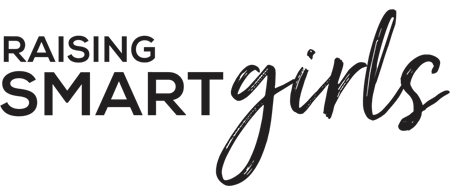The secret to exciting school-based STEM learning is a mix of resources, good teachers, and an administration open to trying new things. But how can parents determine if their child’s potential school encompasses this mix? If you’re a parent looking for a school that is STEM ready, consider the following indicators to help you decide.
The Walls
A school that has embraced STEM learning should have walls that visually reflect creative thinking. Look for student work that demonstrates the design process: projects that tackle a stated problem or question followed by idea iteration. Look for evidence of self-reflection such as, “what I’d do differently next time”. Look for experimentation with materials and creative use of recycled “junk” – all evidence of the design and redesign process so integral to STEM. Look for projects that demonstrate collaborative group work, another hallmark of STEM learning; finally, projects that show a range of individuality should be displayed. Good STEM learning also crosses disciplines, so projects that translate science or math into something literary or artistic are other good indicators.
Design process: projects that tackle a stated problem or question followed by idea iteration.
Classrooms and Facilities
One thing to note is that computers have long been used as an easily quantifiable benchmark for schools, often with limited correlation to increased student learning. In short, computers, smartboards, 3D printers, tablets, and other trending tech are only as good as the teachers utilizing them.
A school that is committed to the infrastructure needed to teach science and technology are obvious signs that a school is serious about STEM learning. Look for rooms that allow for science labs, computer labs, wood shops, or the increasingly popular maker spaces. Do consider that even schools on tight budgets might be utilizing spaces in multiple ways. If you don’t see evidence of these types of rooms, make sure to ask. One thing to note is that computers have long been used as an easily quantifiable benchmark for schools, often with limited correlation to increased student learning. In short, computers, smartboards, 3D printers, tablets, and other trending tech are only as good as the teachers utilizing them.
The Staff
One obvious indicator of a STEM school is the presence of full-time science, technology, art, and media teachers. A school with a diverse staff, in background and training, can serve STEM learning well. The older the grade level, the more specific type of training teachers will need. For example, elementary teachers are required to have a subject focus area in their undergraduate studies, in addition to getting a Bachelor’s degree in elementary education. Furthermore, certain curricular programs require additional hours of training. If you’re researching multiple schools, don’t hesitate to ask about the staff’s education, as it is public information.
Arts Integration
Educators today include creativity and arts as an integral part of STEM learning; “art” is often added to STEM to form STEAM. A good art program teaches kids how to experiment with materials, visualize ideas, and develop a creative approach to problem-solving. Find out how often arts are taught and if the art teachers work with other teachers to achieve arts integration. For example, in math, this may be tessellations; in science, it could be different ways of visualizing big concepts such as astronomy, Earth’s geology, timescales, or ecology.
A good art program teaches kids how to experiment with materials, visualize ideas, and develop a creative approach to problem-solving. Find out how often arts are taught and if the art teachers work with other teachers to achieve arts integration.
Field Trips
Field trips can provide unique opportunities for hands-on, experiential learning. Ask questions about what types of field trips the school supports. During a time when most schools’ budgets are tightened, field trips are currently being limited. If your school still allows field trips, what types of ones do they prioritize? Although roller coasters and splash parks can be fun, exposure to a science museum, live animals, or a planetarium is far more enriching and shows a commitment to getting kids connected to STEM learning.
Extracurricular Opportunities
Many schools offer STEM opportunities outside of school hours, such as clubs, mentorships, classes, and field experiences. These opportunities can provide further exploration for your STEM-interested child in a way the school day can’t provide. Also, investigate the vacation week and summer break programs; programming can increase STEM learning during school breaks and reverse the infamous “summer slide.”
Partners
Find out if your school partners with area businesses, colleges, museums, or non-profits. Funding and resources exist to bring enrichment into the schools. What is sometimes lacking is a school administration willing to take the time and energy to bring in enrichment partners. Find out if the school connects with area partners, and if so, what kind of programs are offered to students. STEM career pathway programs with colleges, lab visits, computer coding, or women in science are all examples of STEM partnerships you might find at a school.
If you’re interested in sending your daughter to a school with a strong STEM focus, make sure to do your research before making a final decision. Some schools are further along in their process of becoming STEM-oriented, and some are more committed than others to their STEM programs. Looking for indicators during your search could make all the difference in your daughter’s academic career!

